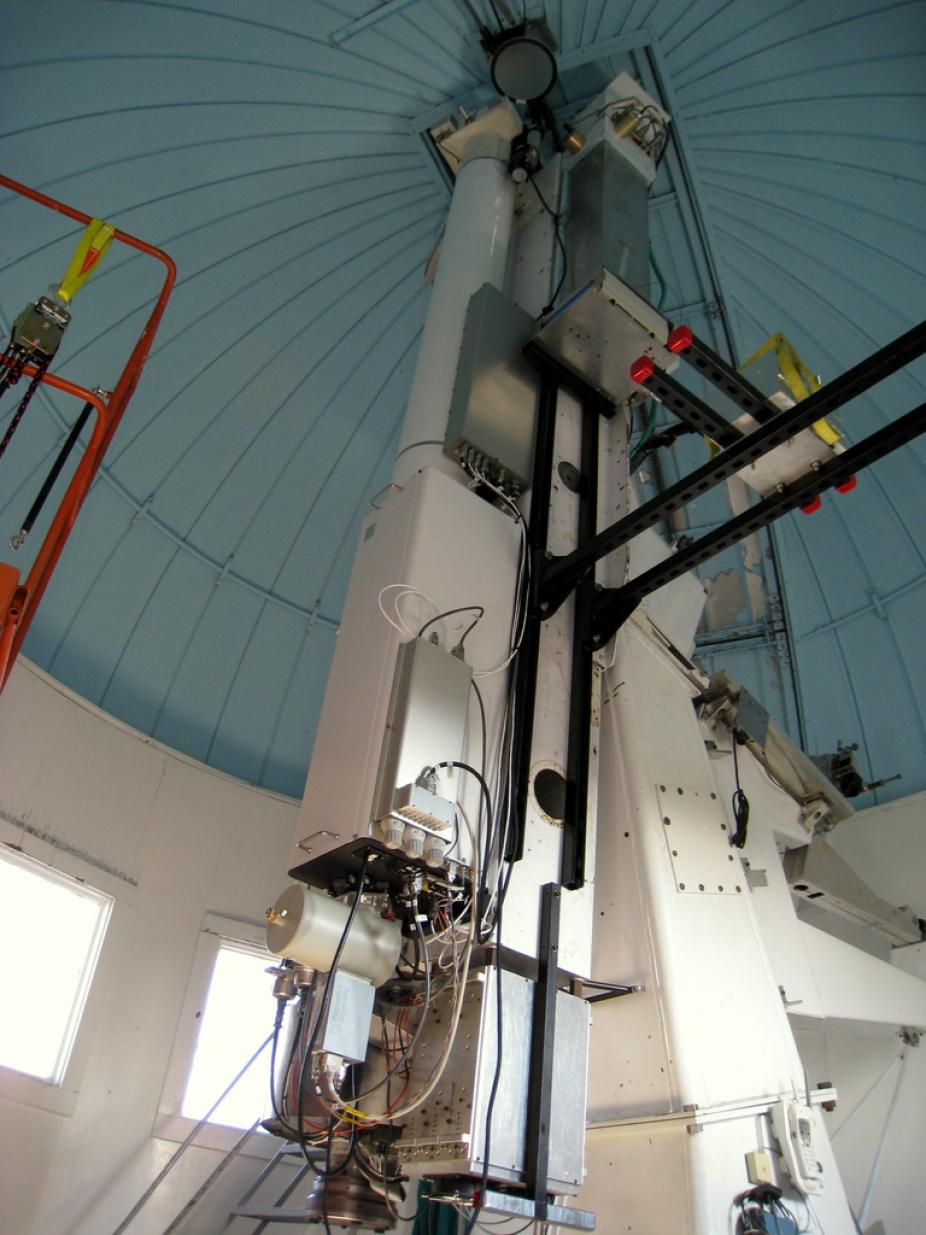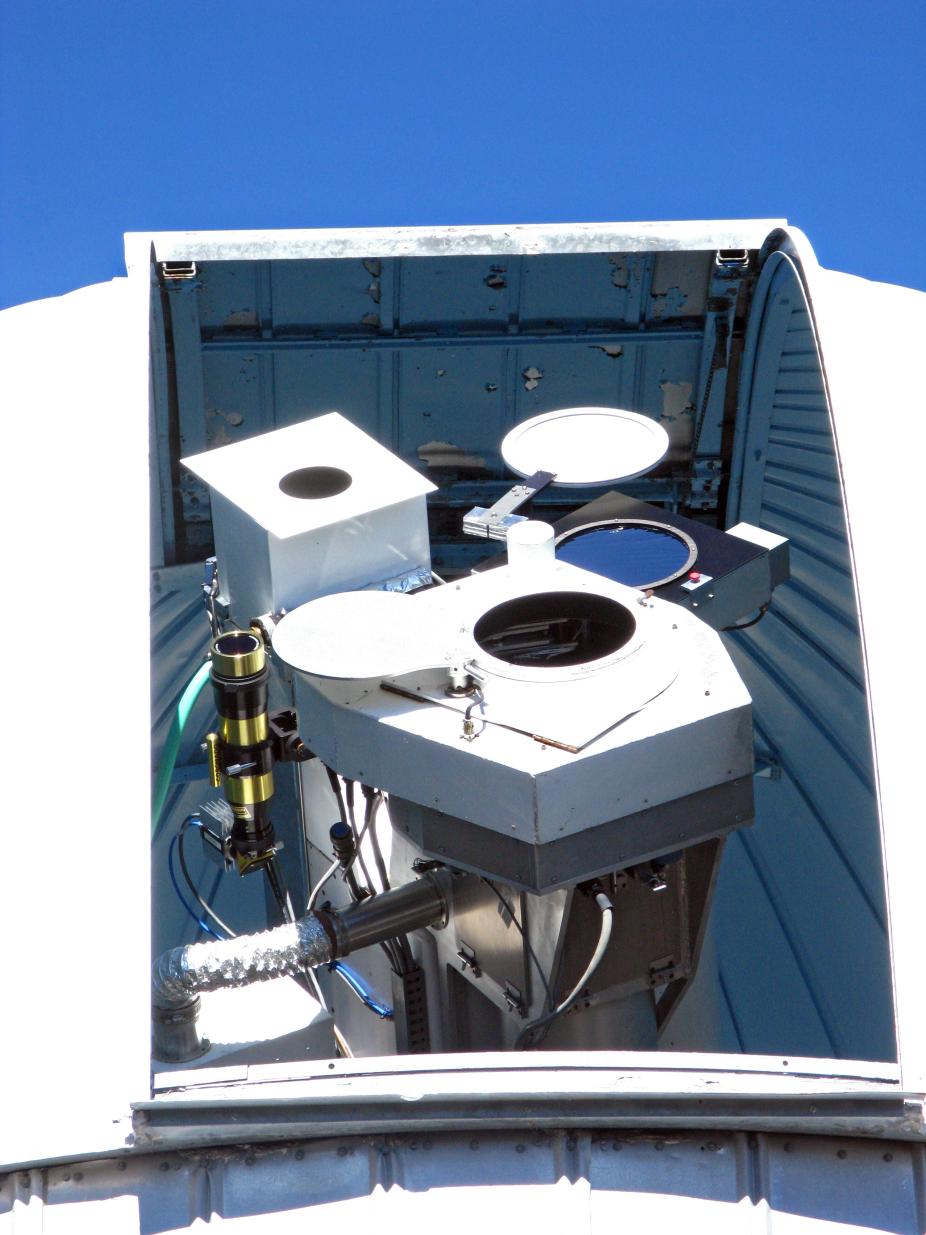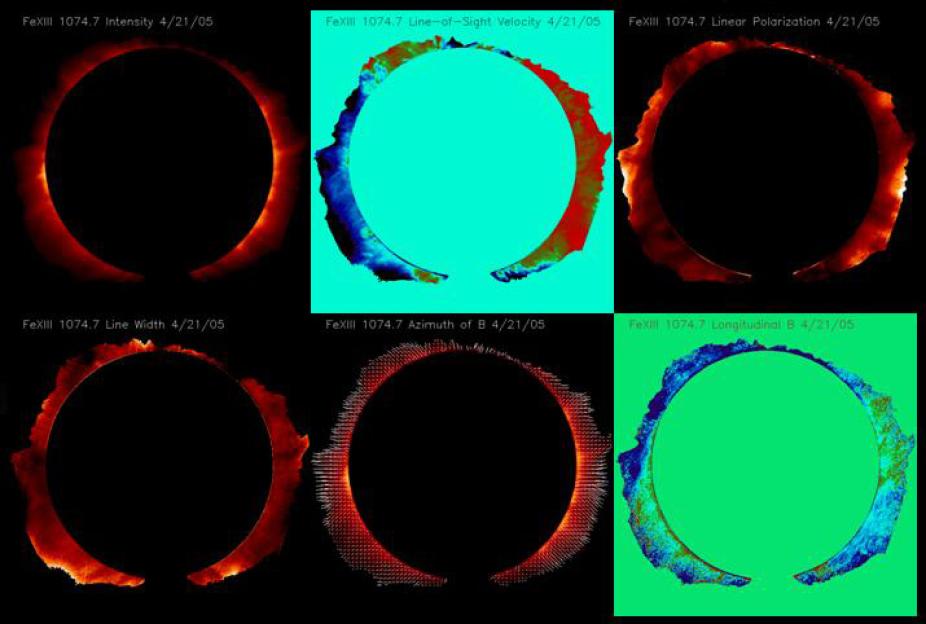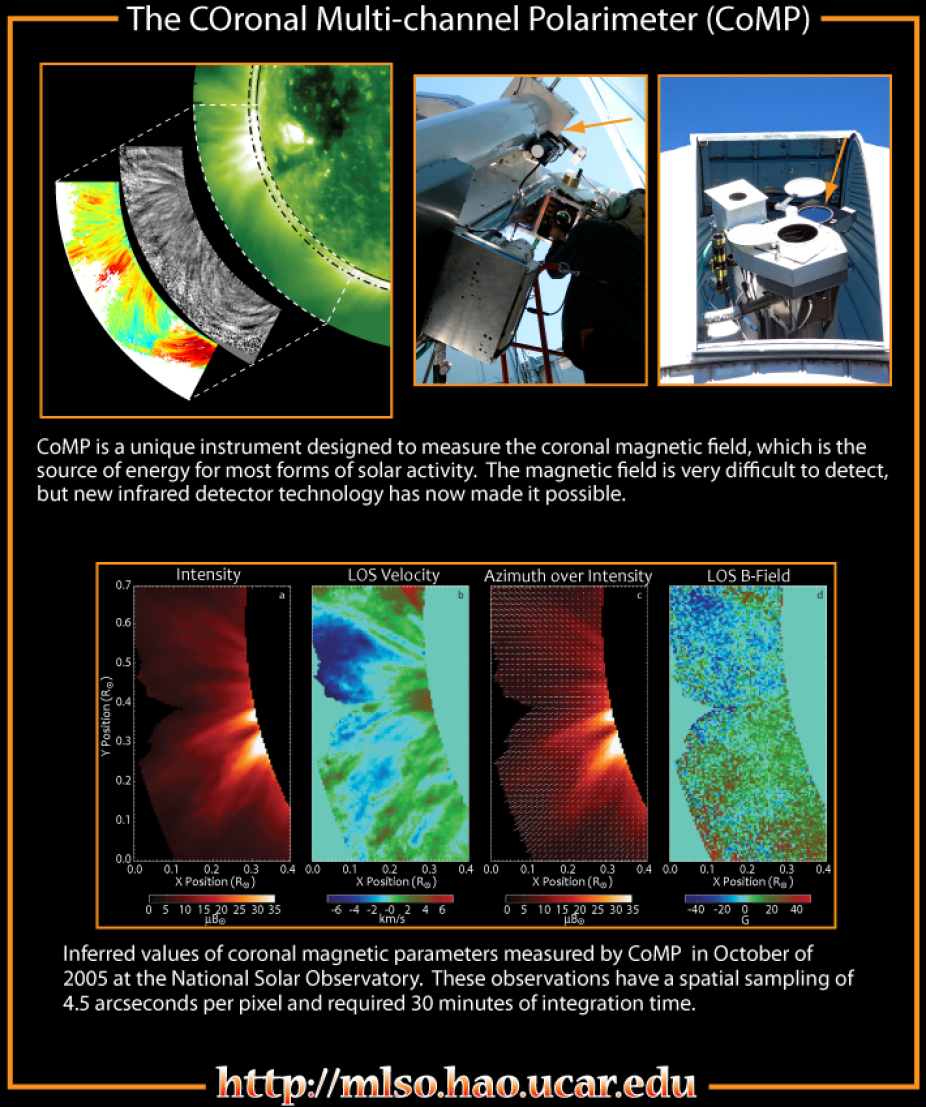COronal Multi-channel Polarimeter
The CoMP instrument (see Tomczyk, et al. 2008) can observe the coronal magnetic field with a full FOV in the low corona (~1.03 to 1.5 Rsun), as well as obtain information about the plasma density and motion. Like Solar-C, CoMP records the intensity and the linear and circular polarization (Stokes I,Q,U,V) of the forbidden lines of Fe XIII at 1074.7 nm and also at 1079.8 nm. In addition to detecting the POS field direction and the LOS field strength, CoMP also measures the LOS plasma velocity from Doppler observations in the wings of the line intensity (Stokes I), and the POS density from the ratio of the lines at 1074.7 and 1079.8 nm.

CoMP on the spar

View of CoMP from outside the dome.
This figure shows coronal properties measured by the HAO/NCAR funded Coronal Multi-channel Polarimeter (CoMP) instrument obtained by Steve Tomczyk and co-workers in April of 2005 on the 20-cm aperture OneShot coronagraph at NSO's Sacramento Peak Observatory in New Mexico.

These observations have a spatial sampling of 4.5 arcseconds per pixel and required 30 minutes of integration time to acquire a measure of the LOS magnetic field strength. The LOS field strength measurements shown at lower right, are significantly worse than those shown in the Solar-C data due to the smaller coronagraph aperture (20 cm vs. 46 cm on Solar-C), shorter integration time and smaller pixel size. The inclusion of LOS velocity measurements, along with intensity and linear polarization reveal ubiquitous propagating 3-5 mHz fluctuations in the solar corona, which have been identified as being predominately Alfvénic (Tomczyk et al. 2007). This remarkable observation is possible due to the combined measurements of LOS velocity and linear polarization over a wide range of coronal heights, each recorded at a very high time cadence (29 seconds).
These observations have a spatial sampling of 4.5 arcseconds per pixel and required 30 minutes of integration time to acquire a measure of the LOS magnetic field strength. The LOS field strength measurements shown at lower right, are significantly worse than those shown in the Solar-C data due to the smaller coronagraph aperture (20 cm vs. 46 cm on Solar-C), shorter integration time and smaller pixel size. The inclusion of LOS velocity measurements, along with intensity and linear polarization reveal ubiquitous propagating 3-5 mHz fluctuations in the solar corona, which have been identified as being predominately Alfvénic (Tomczyk et al. 2007). This remarkable observation is possible due to the combined measurements of LOS velocity and linear polarization over a wide range of coronal heights, each recorded at a very high time cadence (29 seconds).

Phase travel-time analysis (Jefferies et al., 1994, 1997; Finsterle et al., 2004; McIntosh et al., 2004) was used to detect the Alfvén waves in CoMP LOS velocity observations. Furthermore, it was possible to estimate that the observed fluctuations fall far short of providing the primary source of energy needed to heat the corona (see Tomczyk et al., 2007 for a full discussion). The detection of Alfvén waves in the corona provides important insights on the processes responsible for coronal heating. We will build upon this result with more sophisticated observations of coronal waves from the large aperture COSMO coronagraph. COSMO observations will allow us to use coronal seismology to explore both the magnetic and plasma structure of the corona. Coronal seismology combined with observations of the coronal magnetic field will provide new and powerful tools for solving the outstanding questions in coronal physics.
Phase travel-time analysis (Jefferies et al., 1994, 1997; Finsterle et al., 2004; McIntosh et al., 2004) was used to detect the Alfvén waves in CoMP LOS velocity observations. Furthermore, it was possible to estimate that the observed fluctuations fall far short of providing the primary source of energy needed to heat the corona (see Tomczyk et al., 2007 for a full discussion). The detection of Alfvén waves in the corona provides important insights on the processes responsible for coronal heating. We will build upon this result with more sophisticated observations of coronal waves from the large aperture COSMO coronagraph. COSMO observations will allow us to use coronal seismology to explore both the magnetic and plasma structure of the corona. Coronal seismology combined with observations of the coronal magnetic field will provide new and powerful tools for solving theoutstanding questions in coronal physics.
A list of CoMP publications can be found in the CoMP ADS Library

CoMP summary slide